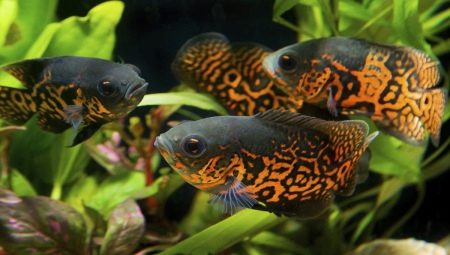Astronotus is a bright and predatory representative of the family Cichlidae, whose appetite and food preferences often lead to confusion for beginner aquarists. Given that these spectacular creatures with great pleasure absorb raw meat and fish, there are naturally doubts about the possibility of their maintenance with other representatives of the aquarium fauna. What kind of fish can and cannot keep astronotuses in the same aquarium?
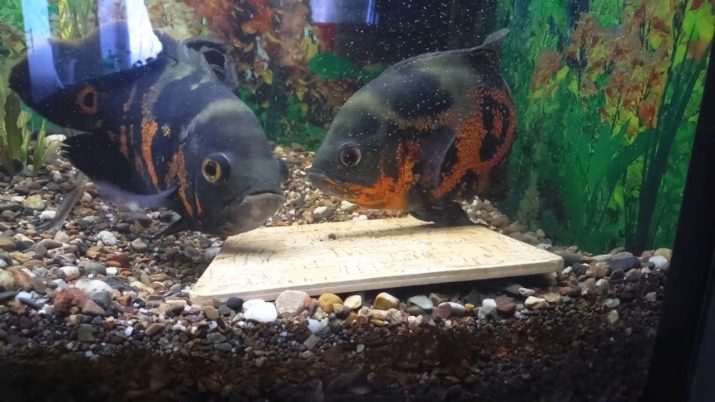
Astronotus compatibility with other fish species
It is commonly believed that these beautiful and graceful predators have a fairly peaceful and calm disposition. They are not afraid of people, know how to recognize their master and even allow themselves to be stroked. However, in relation to other inhabitants of the home reservoir, astronotuses can behave unpredictably and very aggressively.
For many species of aquarium fish, these predators can pose a mortal threat. Taking into account the excellent appetite and carnivorousness of astronotuses, some aquarists even specially grow potential victims for them to eat. Usually aquarium fish of small sizes become a live food for astronotuses.
According to experienced aquarists, these creatures have an impressive appetite. Gluttony of astronotuses often becomes the cause of their health problems and even death. So, this beautiful predator can easily suffocate and die, choking on another medium-sized aquarium fish.
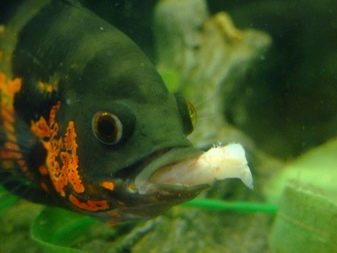
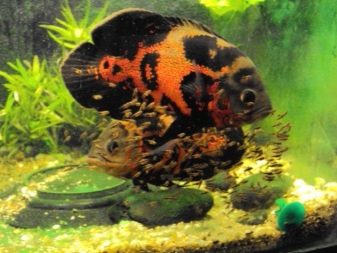
However, practice shows that the astronotus’s neighbors in the aquarium can still be. In particular, aquarium fish of the same size as the predators themselves can live with them in the same tank, without the risk of being eaten. In addition, representatives of medium-sized aquarium fauna (from 10 centimeters and more) that have protective spikes and thorns on their bodies can get along with astronotuses.
Astronotus compatibility table with other fish species
| Title | Compatibility |
| Pterygoplychitis | Yes |
| Akara turquoise | Yes |
| Large catfish synodontis | Yes |
| Silver metinnis | Yes |
| Large species of cichlids | Yes |
| Boesman's melanotenia (iris) | Yes |
| Apistogram Ramizeri (a type of small cichlids) | No |
| Afiosemion Gardner | No |
| Antsistrus | Possible in rare cases and only with large individuals |
| Parrot fish | No |
| Goldfish, Veiltail | No |
| Guppy | No |
| Swordsman | No |
| Danio rerio | No |
| Mollinesia | No |
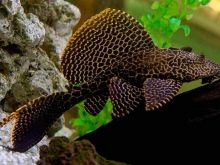
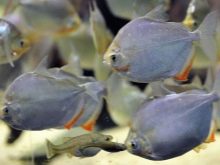
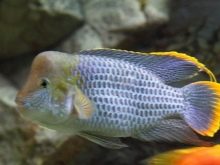
When planning to contain astronotus in a company with aquarium fish of other species, it is important to consider the correspondence of their sizes to each other. It is preferable that the size of the body in astronotuses and other fish was approximately the same.
It should be noted that under aquarium conditions, astronotuses grow up to 20-25 centimeters.

Useful information about the content of astronotuses
According to experienced aquarists, at the very beginning of life, these graceful predators are able to get along with almost all types of aquarium fish. Small astronotuses rarely show aggression and do not conflict with other inhabitants of the home reservoir. but as soon as the body size of the fish reaches 10-12 centimeters, they begin to pose a serious threat to their smaller neighbors. There are frequent cases when the grown predators ate other inhabitants of the aquarium, with which they had previously coexisted peacefully for a long time.
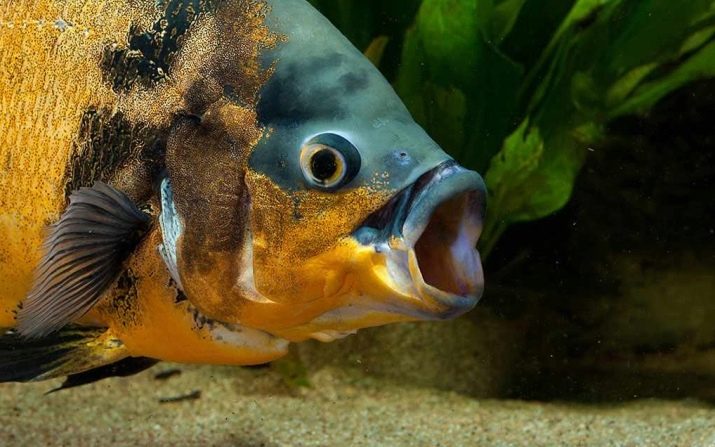
The size of the aquarium is of great importance in the content of astronotuses. In a cramped reservoir, these predators become aggressive, begin to enter into conflicts and fierce battles both with each other and with relatives of other species. For this reason, it is desirable that the volume of the aquarium with fish of this species is at least 500 liters. In addition, it has been observed that aggression in astronotuses can occur as a result of stress. Under the influence of stressful conditions, these predators are able to enter into conflicts and attack more peaceful neighbors.
Before the mating season, astronotuses begin to "divide" the territory, in conflict with other inhabitants of the aquarium. This behavior is due to the instinctive desire of predators to protect their future offspring from sources of possible danger.
Experienced aquarists recommend populating the aquarium with astronotuses and other species of fish at the same time. With this approach, the inhabitants of the aquarium can immediately "divide" the territory among themselves, which in the future will avoid conflicts.
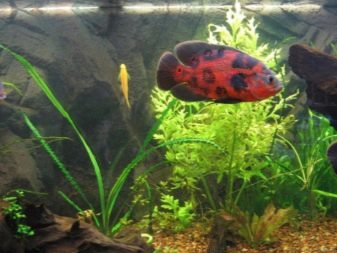
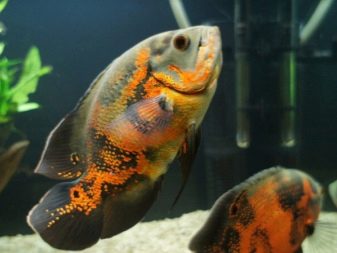
For more information on the features of astronotuses, see the next video.
